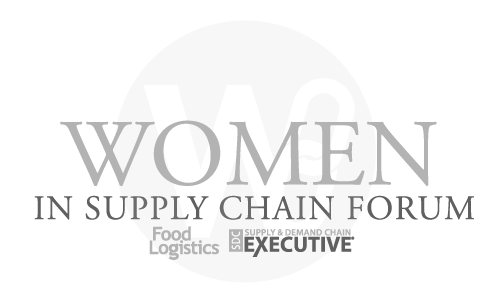Unpacking the Current State of US Trucking
The trucking industry is the backbone of the American economy, responsible for moving over 70% of the nation’s freight. However, like any sector tied closely to economic cycles, it experiences periods of expansion and contraction. Recently, the industry has been navigating a challenging environment, marked by a recent decline in US trucking activity. This downturn isn’t just a blip on the radar; it represents a significant shift from the booming conditions seen during and immediately after the pandemic.
Understanding the current state requires looking beyond simple load volume or rate averages. It involves examining a complex interplay of economic indicators, supply chain dynamics, and evolving market conditions. For many carriers, especially smaller operations, the shift has been stark, moving from a period of high demand and strong pricing power to one where finding profitable loads is more difficult and competition is fierce.
The landscape is characterized by excess capacity – too many trucks and drivers chasing fewer loads. This imbalance naturally puts downward pressure on freight rates, impacting carrier profitability. While larger fleets with diverse portfolios and established contracts may weather the storm more effectively, the effects are widely felt throughout the industry.
Moreover, shifts in consumer spending patterns and inventory management strategies by businesses are directly influencing the demand for trucking services. As the economy adjusts to post-pandemic realities, the frantic pace of freight movement has slowed, leading to reduced activity on many lanes. This environment necessitates a deeper dive into the underlying causes and potential future trajectories for the sector.
Understanding the Recent Decline in US Trucking Activity
Several converging factors have contributed to the recent decline in US trucking activity. At a high level, the primary driver has been a rebalancing of supply and demand within the freight market, following an unprecedented surge in activity during the height of the pandemic and its immediate aftermath. During that period, consumer demand for goods skyrocketed, fueled by government stimulus and shifting spending from services to products. This led to bottlenecks across the supply chain, creating massive demand for trucking and driving rates to historic highs.
However, as economic conditions normalize and inflationary pressures lead to shifts in consumer behavior, the demand for goods has softened. Simultaneously, the supply of trucking capacity increased significantly. Attracted by high rates, many new carriers entered the market, and existing carriers expanded their fleets. This combination of decreasing demand and increasing supply created an imbalance that inevitably led to a downturn in freight volumes and rates.
Key indicators reflecting this decline include:
- Decreased Spot Market Rates: The most immediate and visible sign of the downturn has been the sharp drop in spot market rates, which are highly sensitive to daily fluctuations in supply and demand.
- Lower Load-to-Truck Ratios: Data from freight matching platforms consistently shows a lower number of available loads for each available truck, indicating reduced demand relative to capacity.
- Increased Carrier Failures: The challenging economic environment, coupled with lower rates, has unfortunately led to an increase in trucking company failures, particularly among smaller carriers who may lack the financial reserves to weather prolonged downturns.
- Reduced Miles Driven: Aggregate data often shows a reduction in total miles driven by commercial trucks, reflecting the overall decrease in freight movement.
This period represents a market correction, albeit a painful one for many. The overcorrection in capacity, driven by the previous boom, has flooded the market at a time when underlying demand is contracting or growing at a much slower pace.
Economic Forces Behind the Downturn
The fortunes of the trucking industry are inextricably linked to the broader economy. The economic forces currently at play are significant drivers of the recent decline in US trucking activity.
One of the most impactful factors has been inflation. While inflation is showing signs of cooling in some areas, the cumulative effect of rising prices has impacted consumer purchasing power. Faced with higher costs for essentials like groceries and energy, consumers are tightening their belts, leading to decreased spending on discretionary goods – many of which are transported by truck. This reduction in consumer demand directly translates to less freight needing to be moved.
Furthermore, businesses have been working through excess inventory accumulated during the supply chain disruptions of previous years. During the peak of the supply chain crisis, companies ordered goods far in advance and in larger quantities to avoid stockouts. This led to warehouses becoming increasingly full. The process of destocking – reducing these elevated inventory levels – means fewer new orders are being placed, and consequently, less freight is being shipped from manufacturers and ports to distribution centers and retailers. Until inventory levels normalize across various sectors, the demand for trucking services for replenishment will remain subdued.
Interest rate hikes by the Federal Reserve, aimed at combating inflation, also play a role. Higher interest rates increase the cost of borrowing for businesses, making investments in expanding operations, building new warehouses, or even purchasing new trucks more expensive. This can further dampen economic activity and reduce the need for transportation services.
Geopolitical events and global economic slowdowns can also have ripple effects on the US trucking market. Disruptions to international trade flows or reduced demand from trading partners can impact export volumes and the movement of imported goods, both of which require domestic trucking for the final leg of delivery.
In essence, the economic environment characterized by cautious consumer spending, inventory corrections, and tighter credit conditions creates a less favorable climate for robust freight demand, contributing significantly to the recent decline in US trucking activity.
The Impact of Regulation and Policy on Trucking Trends
Beyond the macroeconomic factors, the trucking industry is heavily influenced by a complex web of regulations and policies. These governmental actions, while often intended to improve safety, environmental impact, or working conditions, can also have significant effects on operational costs, capacity, and ultimately, freight movement trends, potentially contributing to or exacerbating the recent decline in US trucking activity under certain conditions.
One key area is environmental regulation. Stricter emissions standards for new trucks, while promoting sustainability, add significant costs to purchasing new equipment. For carriers operating on thin margins during a downturn, these increased capital expenses can be a major hurdle. Mandates regarding electric vehicles (EVs) and other alternative fuels, while future-oriented, present significant infrastructure challenges and costs for fleets considering adoption.
Labor policies also play a crucial role. Discussions and rulings surrounding the classification of independent contractors versus employees can impact the operational models of many carriers, particularly those relying heavily on owner-operators. Changes in these rules can lead to increased labor costs and administrative burdens. Furthermore, efforts to address the long-standing truck driver shortage, while necessary for long-term industry health, involve policy debates around training programs, age requirements, and hours of service regulations, all of which can influence the available driver pool and operational flexibility.
Safety regulations, such as those concerning Electronic Logging Devices (ELDs) and speed limiters, impact how carriers operate and manage their routes. While ELDs are now standard, ongoing debates about hours of service flexibility continue. Proposed rules regarding speed limiters raise concerns about potential impacts on traffic flow and efficiency.
Trade policies and border security measures, particularly for cross-border freight with Mexico and Canada, can also introduce variables. While nearshoring trends are increasing demand for certain cross-border lanes, regulatory changes or delays at border crossings can impact transit times and costs.
Navigating this regulatory landscape requires carriers to stay informed and adapt. Policy changes can affect everything from equipment choices and operational planning to labor strategies and financial investments. While not always the primary driver of a broad downturn like the recent decline in US trucking activity driven by economic factors, regulatory burdens can certainly intensify the challenges faced by carriers during periods of reduced demand and lower rates.
Navigating Industry-Specific Challenges
Beyond the overarching economic and regulatory forces, the trucking industry faces several unique, internal challenges that can exacerbate the impact of a market downturn and contribute to the recent decline in US trucking activity as seen at the individual carrier level.
One persistent challenge is driver recruitment and retention. Despite periods of reduced freight volume, the long-term demographic trend of an aging driver workforce and difficulties attracting new talent means that finding and keeping qualified drivers remains a crucial issue. High driver turnover rates lead to increased recruitment and training costs for carriers and can impact operational efficiency even when freight is less abundant. While the pressure on recruitment might ease slightly during a downturn, the underlying structural challenge persists.
Operational costs are another significant factor. While fuel prices have seen fluctuations, other costs like insurance premiums, equipment maintenance, and tire expenses continue to rise. These fixed and variable costs eat into already shrinking margins during periods of low rates. Carriers must become even more disciplined in managing expenses and optimizing their routes and asset utilization.
The rise in cargo theft is an increasingly worrying trend that adds significant risk and cost to trucking operations. Organized retail crime and sophisticated theft rings target valuable cargo, leading to direct financial losses for carriers and shippers, increased insurance costs, and potential damage to reputations. Combating cargo theft requires enhanced security measures, technology investments, and collaboration across the supply chain.
Furthermore, the pace of technological change presents both opportunities and challenges. Adopting new technologies like advanced telematics, automation in logistics processes, and digital freight matching platforms can improve efficiency and visibility. However, the initial investment can be substantial, and integrating these systems requires expertise and training. Carriers must strategically evaluate which technologies offer the greatest return on investment, especially in a constrained financial environment.
The competitive landscape is also a constant challenge. The low barriers to entry for becoming a carrier mean that the market can quickly become saturated during good times, intensifying competition when demand softens. Smaller carriers, in particular, may struggle to compete on price with larger fleets or adapt quickly to changing market dynamics.
Navigating these industry-specific hurdles while simultaneously managing broader economic pressures requires resilience, strategic planning, and a focus on efficiency and differentiation. Carriers that can effectively manage costs, retain drivers, mitigate risks like cargo theft, and leverage technology are better positioned to navigate the current environment characterized by the recent decline in US trucking activity.
Looking Ahead: What’s Next for the Trucking Sector
Predicting the future with certainty is impossible, but analyzing current trends and underlying factors allows us to consider potential trajectories for the trucking sector following the recent decline in US trucking activity. Most industry analysts anticipate a period of gradual recovery rather than a sudden rebound to the peak conditions of a few years ago.
Several factors suggest that a slow stabilization might be on the horizon. As businesses work through their excess inventories, the need for replenishment will eventually increase, leading to a modest uptick in freight volumes. Shifts in consumer spending, potentially favoring goods again after a period focused on services, could also contribute to renewed demand.
Furthermore, the current downturn is leading to a necessary correction in market capacity. The increase in carrier failures and some owner-operators exiting the market reduces the overall supply of trucks, which over time will help to rebalance the market dynamics and potentially lead to a gradual firming of freight rates. This shakeout, while difficult for those affected, is a natural part of the economic cycle and helps set the stage for future stability.
Technological advancements will continue to shape the industry. Increased adoption of telematics and real-time visibility solutions, like those offered through API integrations, will become even more critical for optimizing routes, managing assets, and meeting shipper demands for transparency. Automation in areas like warehouse operations and potentially in driving assistance technologies will also play a growing role.
The focus on sustainability will also intensify. Carriers will face increasing pressure from regulators and shippers to reduce their environmental footprint. This will drive continued investment in alternative fuels, aerodynamic equipment, and efficient operational practices. While the transition has costs, it also presents opportunities for carriers to differentiate themselves.
For carriers looking to thrive in this environment, adaptation and strategic differentiation are key. Relying solely on volume or low prices is unsustainable. Instead, successful carriers will likely focus on:
- Operational Efficiency: Meticulous cost management, optimized routing, and efficient asset utilization are paramount.
- Building Strong Shipper Relationships: Focusing on consistent, reliable service and partnership rather than just transactional hauling helps secure freight in a competitive market. Offering specialized services, such as cross-border expertise or cold chain capabilities, can also create valuable niches.
- Leveraging Technology: Investing strategically in technology that enhances visibility, communication, and efficiency pays dividends. For example, having robust real-time freight visibility through API integration is a major advantage.
- Maintaining a Strong Driver Workforce: Focusing on driver well-being, fair compensation, and a positive work environment helps retain experienced drivers, which is critical for service quality and efficiency. Our focus on drivers, as highlighted in past features, remains a cornerstone of our approach.
- Diversification: For some carriers, exploring different freight modes (like LTL or intermodal where appropriate) or specialized hauling can help mitigate risk associated with reliance on a single segment. Our asset-based brokerage hybrid model offers this kind of flexibility.
While the recent decline in US trucking activity has presented significant challenges, the industry remains vital to the economy. The current environment is a test of resilience and adaptability. Those who can navigate the economic headwinds, manage operational complexities, and strategically position themselves for future growth will be best equipped to succeed when the market inevitably turns upward again.
Have questions? Contact us here.














